What the BlueBioClimate project partners want to change and why it is important – the 2nd seminar in the 3-year Interreg project investigating climate change and biodiversity in the Oeresund, Kattegat and Skagerrak took place in Tjärnö, Marine Laboratory, University of Gothenburg last week of April.
The zebra mussel is an invasive species that has invaded large freshwater systems. Research shows that zebra mussels supplants native mussels and they settle massively on hard surfaces, which are habitats for many other organisms. Therefore, the advice to environmental managers could be to put restrictions on transporting canoes from an invaded lake to another non-invaded lake.
That is how one concrete message sounded during the 2nd BlueBioClimate seminar last week taking place at the Marine Center, University of Gothenburg, in Tjärnö, just outside Strömstad.
The invasive zebra mussel is just one of several examples from the 18 presentations at Tjärnö that show how the different sub-projects in the Interreg project BlueBioClimate have developed since the kickoff in Autumn 2023.
The individual activities in the project are now starting to clearly address the what do we want to change, why is it important in a climate-biodiversity-society perspective and how can we do it
Species response to climate change and the Decision Support Framework
 Before the round of presentations on the first day of the two-day seminar, project leader Jakob Hemmer-Hansen from DTU Aqua opened the seminar by summarizing that BlueBioClimate is a project launched in the recognition that it is important to address the biodiversity crisis and the climate crises at the same time:
Before the round of presentations on the first day of the two-day seminar, project leader Jakob Hemmer-Hansen from DTU Aqua opened the seminar by summarizing that BlueBioClimate is a project launched in the recognition that it is important to address the biodiversity crisis and the climate crises at the same time:
“Otherwise we will not succeed in achieving an ambitious green transition in a future impacted by climate change. Biodiversity is important for ecosystem resilience – and to secure the services ecosystems provide to our society,” says Jakob Hemmer-Hansen as he stresses what it takes to get there:
“But we also need to know more about how climate change will affect biodiversity to secure efficient biodiversity protection and management under future climates. In BlueBioClimate, we work to close the knowledge gaps and to develop decision support to environmental and biodiversity managers who express an urgent need for new knowledge and practical tools to support their work.”
As a marine restoration-conservation project, BlueBioClimate thus stands out by aiming at taking biodiversity's response to climate change into account when developing the Decision Support Frameworks which will form an important part of the outcome of the project.
The five partner universities from Sweden, Norway and Denmark all work with this focus on biodiversity's response to climate change.
Other presentations at the second BlueBioClimate seminar revealed new studies on how eelgrass is subject to population differentiation – eelgrass beds are different on different coasts. This information will be important for both management and restoration of biodiversity, because this diversity could be linked to vulnerability to climate change.
Another study showed that cod populations live in different habitats, and that, according to models, these populations may respond differently to climate change. This means that cod cannot be treated as a single unit for management; instead we need to consider the genetic diversity within the species.
A third presentation highlighted the importance of using time series of data when trying to elucidate the effects of climate change on biodiversity. The BlueBioClimate network has access to both longer and shorter time series data on organism groups such as plankton, shellfish and fish from coastal areas in the region.
Securing resilient ecosystems and their services
All sub-project are enfolding through three themes in BlueBioClimate: 1. Prioritization and spatial planning, 2. Restoration, land and coastal protection and 3. Invasive, alien and new species.
The overarching objective of BlueBioClimate is, over the next three years, to enable environmental managers to successfully protect and restore aquatic biodiversity in a region impacted by climate change in the marine and freshwater areas in the Oeresund, Kattegat and Skagerrak.
To achieve the goal of enabling environmental managers to act against a deterioration of blue biodiversity, the project partners will develop tools, Decision Support Frameworks, for biodiversity management and protection through co-creation with coastal municipalities and authorities in the Kattegat-Skagerrak region.
The Decision Support Frameworks are supposed to help environmental managers prioritize management efforts to secure resilient ecosystems and their services.
Projektet er støttet af EU Interreg Öresund-Kattegat-Skagerrak, projekt BlueBioClimate
New people
 The Interreg project BlueBioClimate is a work in progress – at this seminar, project leaders were happy to introduce new research colleagues from all partner institutions.
The Interreg project BlueBioClimate is a work in progress – at this seminar, project leaders were happy to introduce new research colleagues from all partner institutions.
Also, Jakob Hemmer-Hansen mentioned the important perspective of networking during the Tjärnö seminar, also stressing the parallel goal to the scientific work packages, the need for a closer collaboration across borders and the need for regional cooperation if we want to succeed with the conservation goals of BlueBioClimate.
With its location by Sweden's most species-rich marine area in the northern part of Bohuslän province, next to Kosterhavet National Park, Tjärnö provided a very relevant and beautiful setting for the seminar.
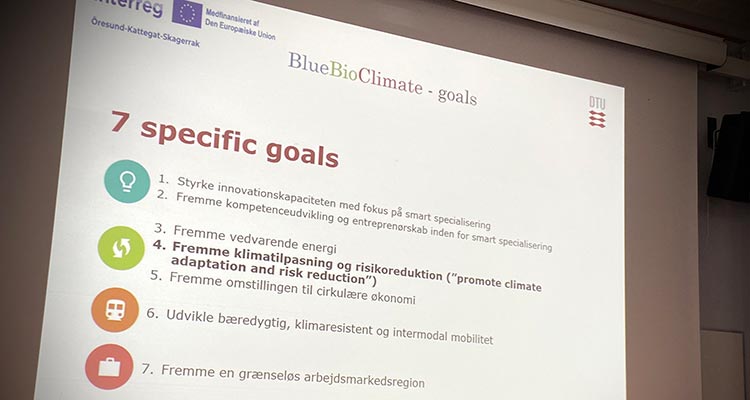
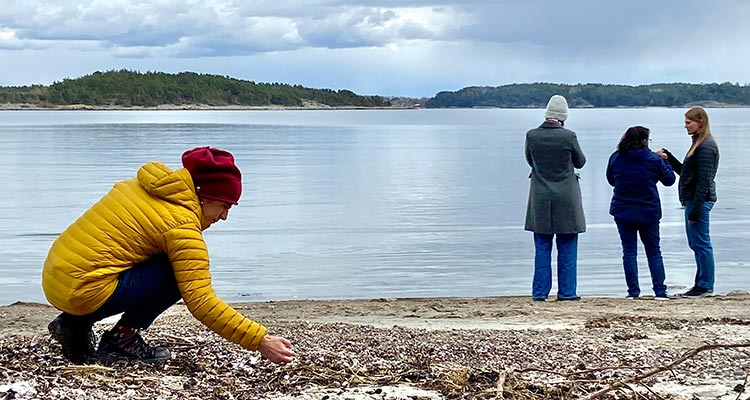
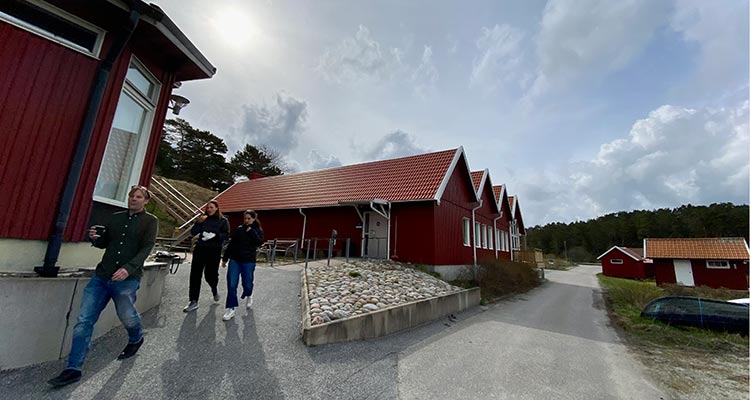
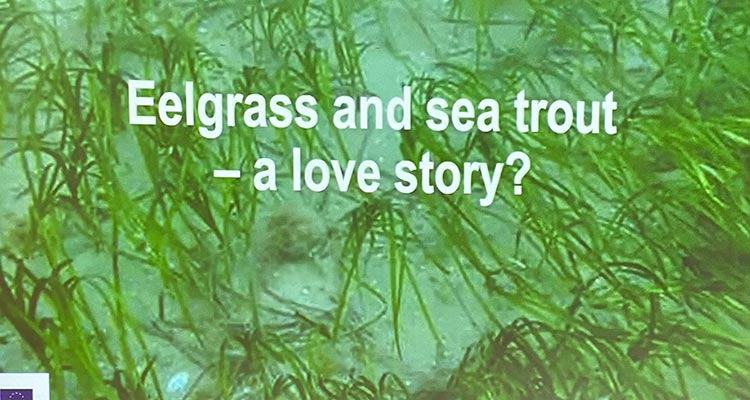
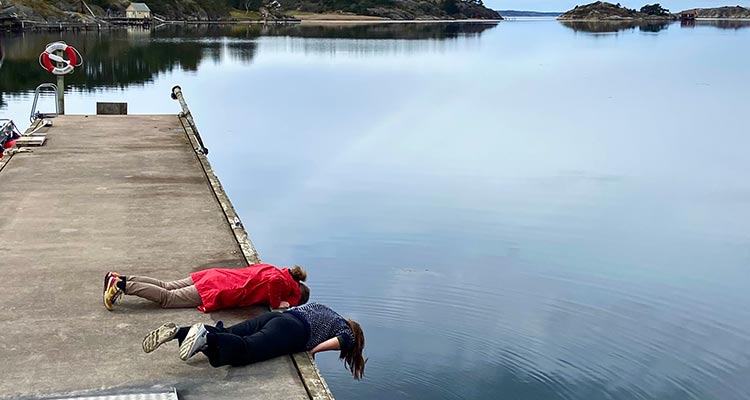
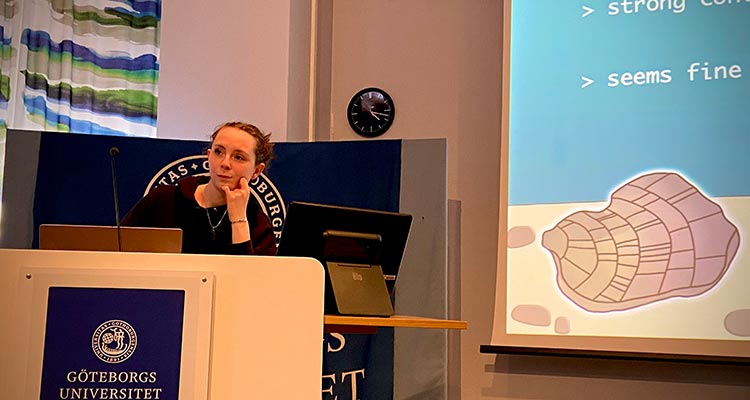
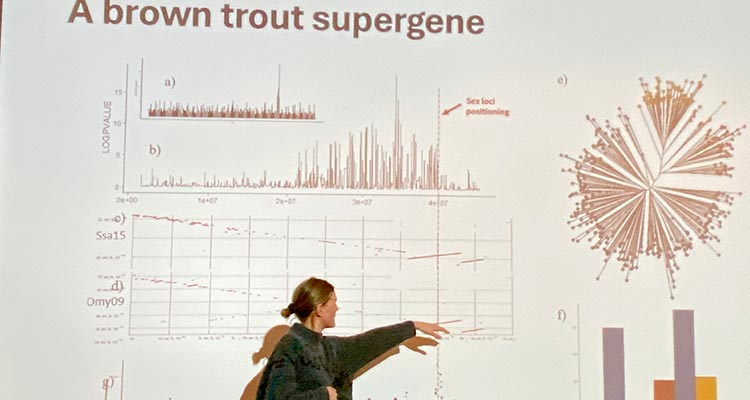
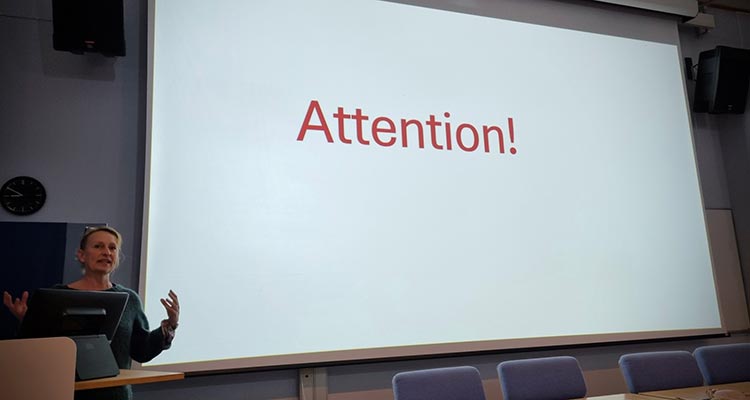
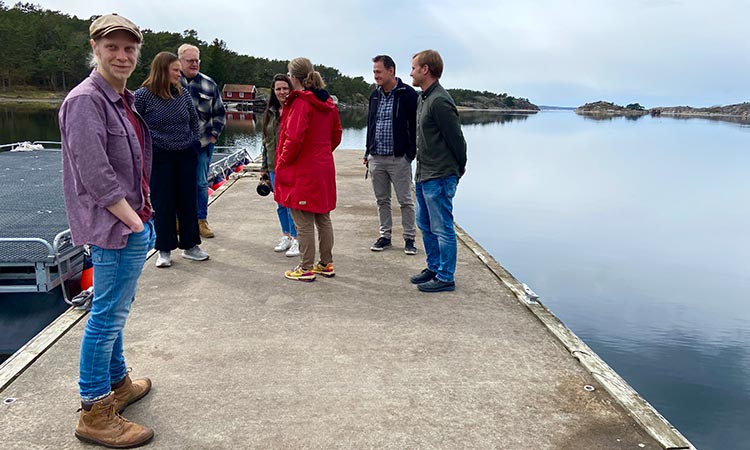
Photos by Anne Trap-Lind
/except "Attention" by Jakob Hemmer-Hansen and the group photo